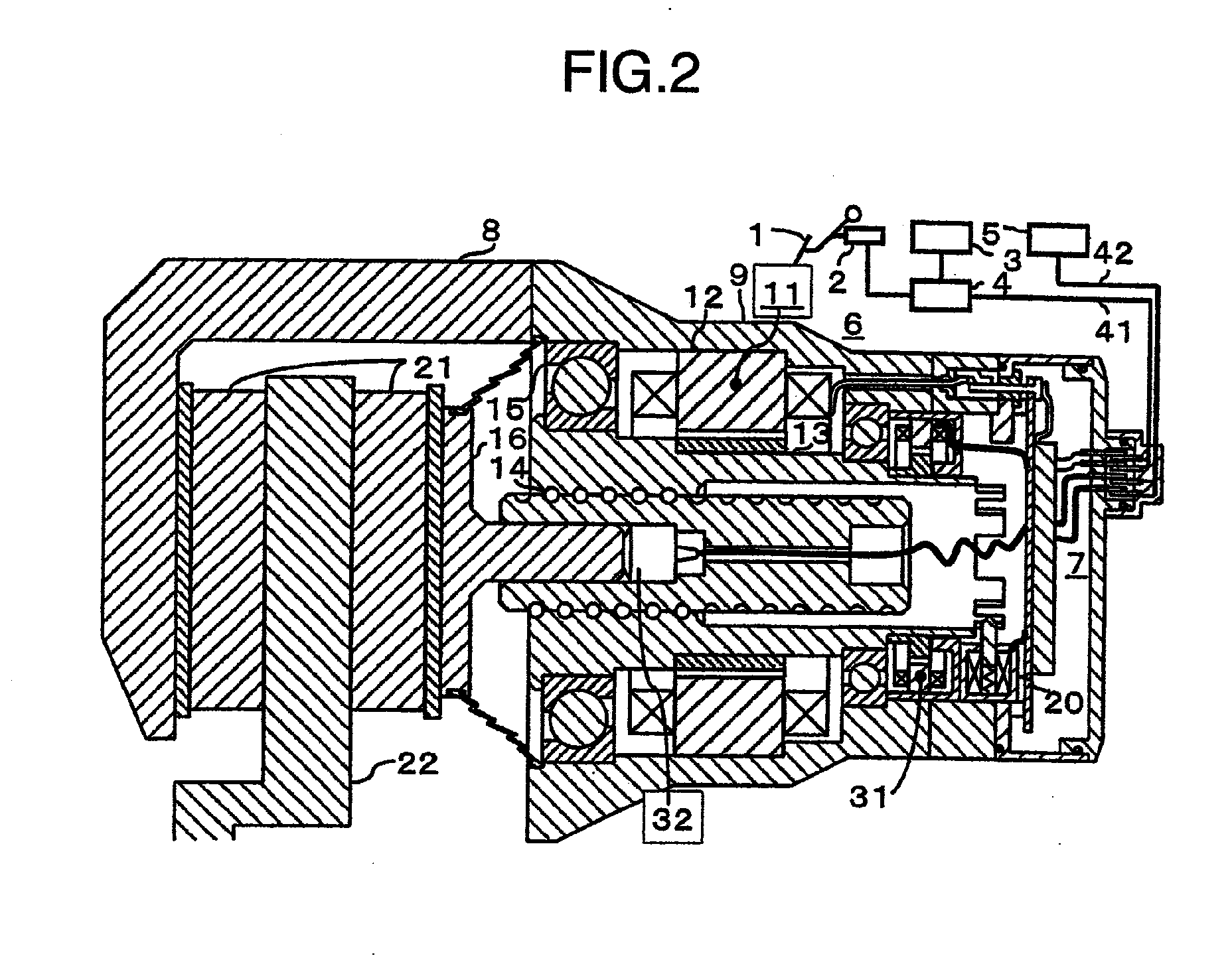Electric Brake
a technology of electric brakes and brake cylinders, which is applied in the direction of brake cylinders, anti-theft devices, instruments, etc., can solve the problems of increased pad gap, increased braking time, and variable degree of deceleration of vehicles, so as to secure sufficient braking force and responsiveness, and good accuracy
- Summary
- Abstract
- Description
- Claims
- Application Information
AI Technical Summary
Benefits of technology
Problems solved by technology
Method used
Image
Examples
Embodiment Construction
[0022]FIG. 1 shows an embodiment of a brake apparatus of the present invention.
[0023]The brake apparatus comprises a brake pedal 1, a pedal sensor 2 for detecting the stepping amount of the brake pedal, an operating state detection unit 3, a vehicle motion controller 4 for calculating braking force, an electric power supply 5, an actuator 6 which is an electric braking force generating mechanism, a drive controller 7 for driving the actuator 6 and for transmitting and receiving a signal, and a caliper 8.
[0024]The actuator 6 comprises a housing 9, a motor 11, a stator 12 which is a fixing part of the motor 11 to the housing 9, a motor rotor 13 which is a rotating part of the motor 11, a screw portion 14 for converting rotation of the motor rotor 13 to linear motion, a bearing 15 supporting the motor rotor 13, a piston 16 generating thrust from the rotational power of the motor rotor 13, a parking brake mechanism 20 for mechanically fixing the position of the motor rotor 13 and the pi...
PUM
 Login to View More
Login to View More Abstract
Description
Claims
Application Information
 Login to View More
Login to View More - R&D
- Intellectual Property
- Life Sciences
- Materials
- Tech Scout
- Unparalleled Data Quality
- Higher Quality Content
- 60% Fewer Hallucinations
Browse by: Latest US Patents, China's latest patents, Technical Efficacy Thesaurus, Application Domain, Technology Topic, Popular Technical Reports.
© 2025 PatSnap. All rights reserved.Legal|Privacy policy|Modern Slavery Act Transparency Statement|Sitemap|About US| Contact US: help@patsnap.com



